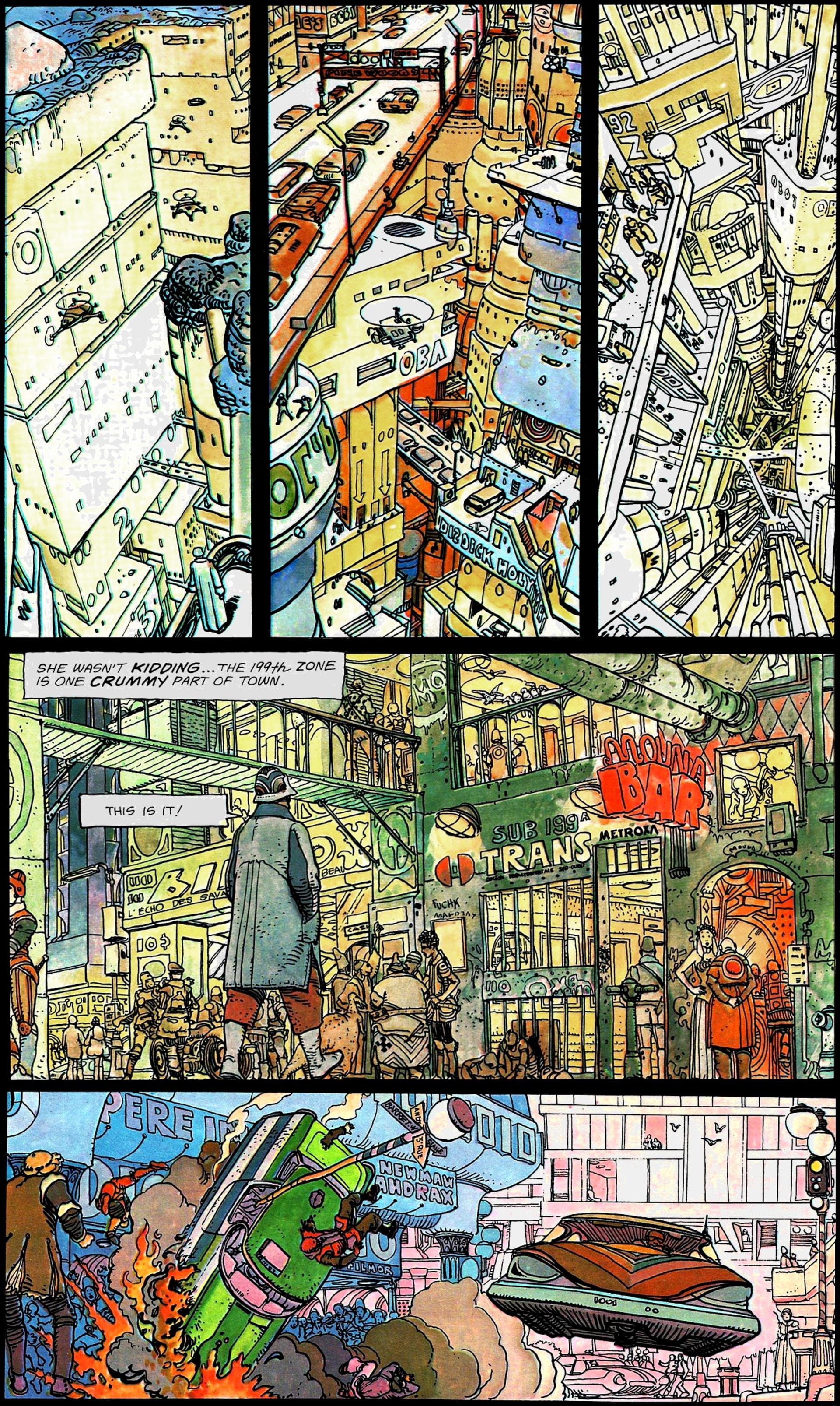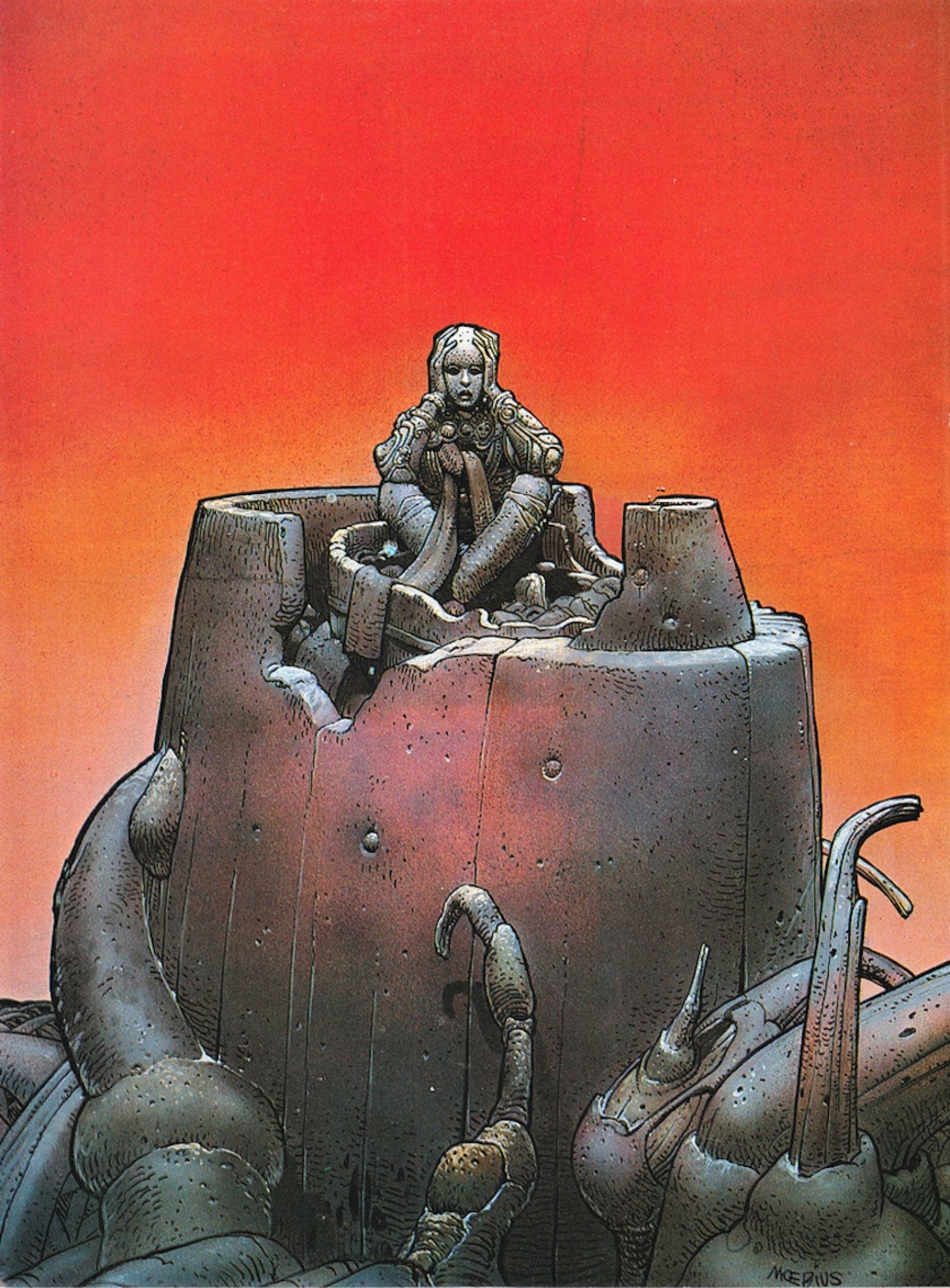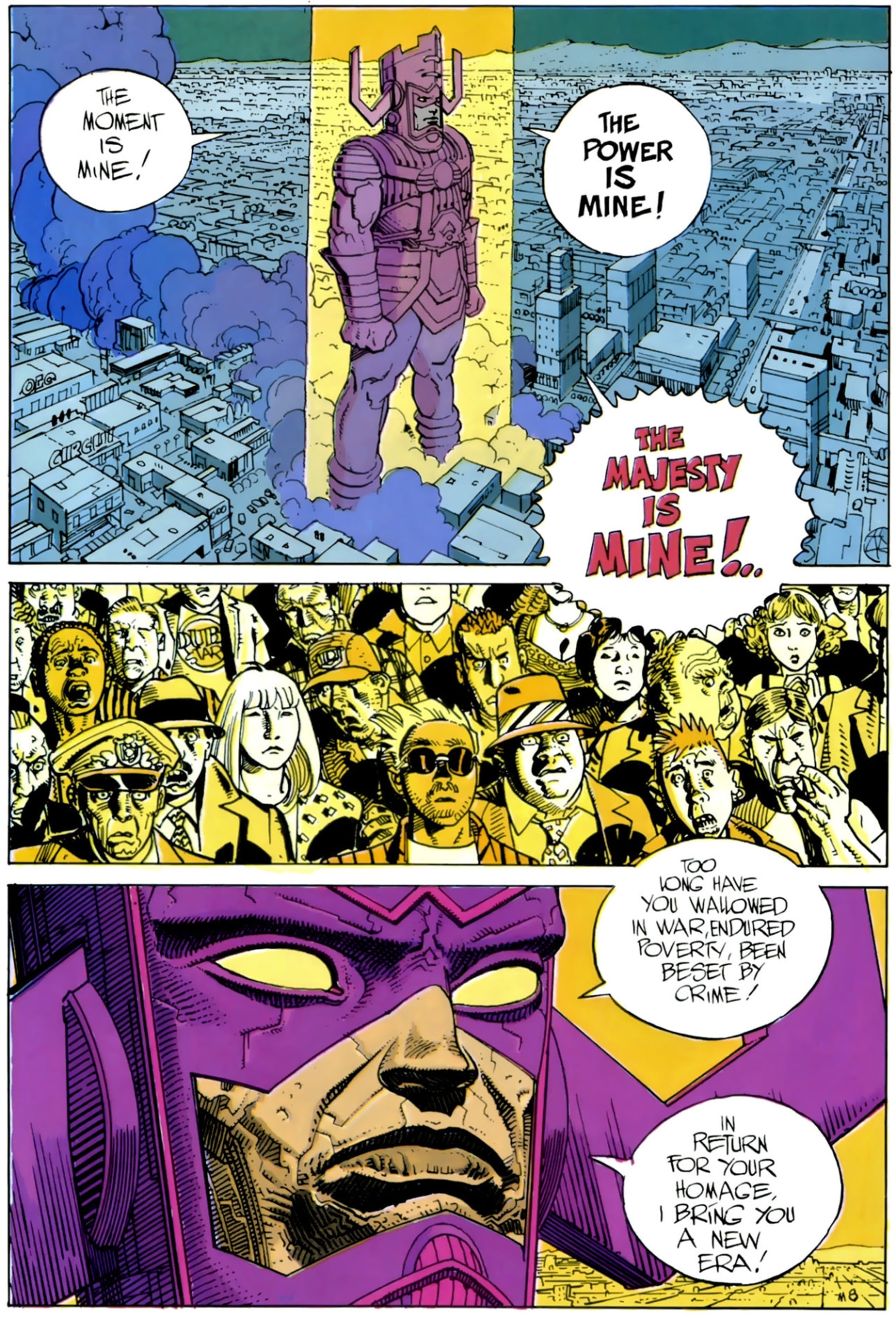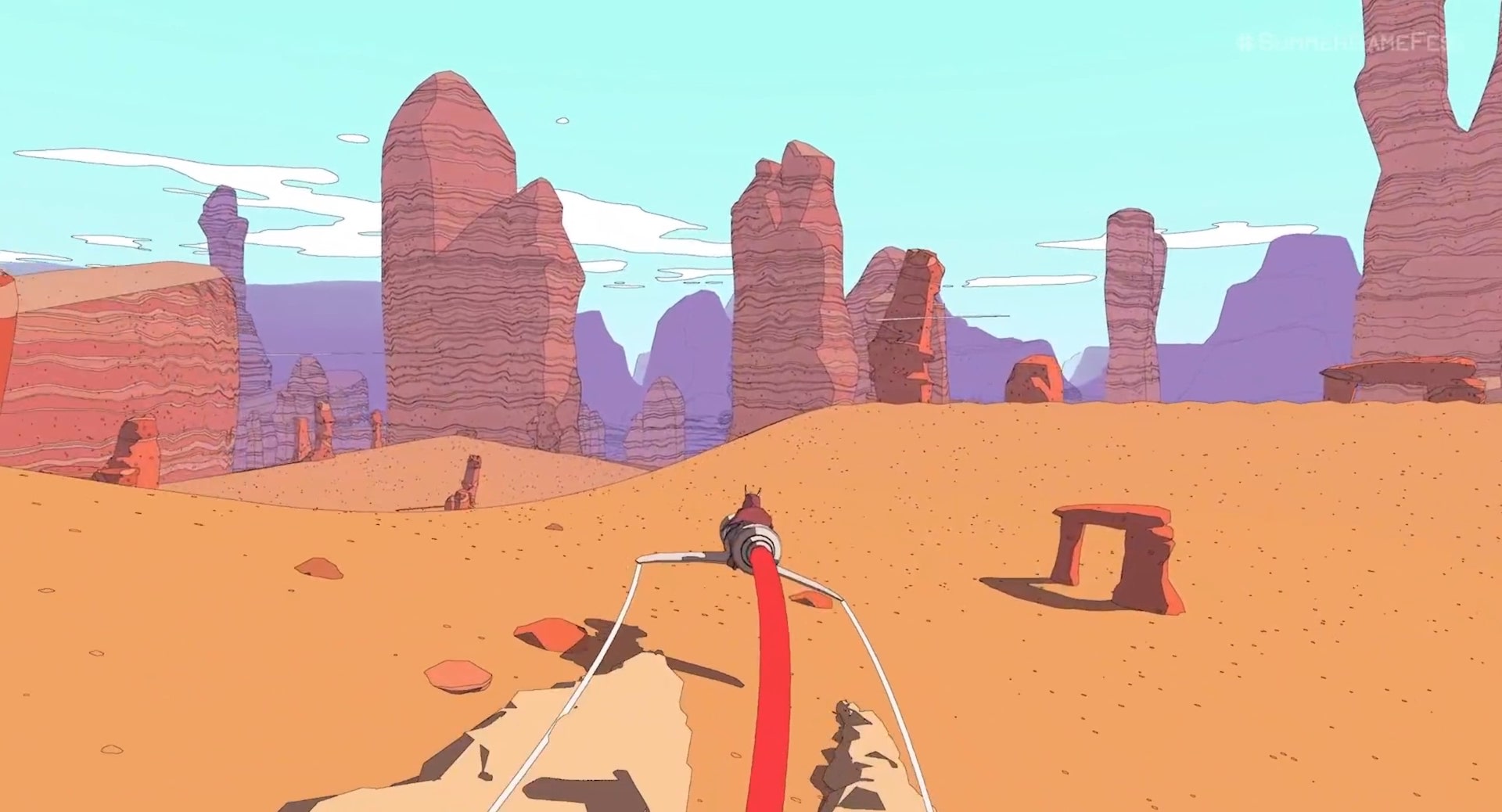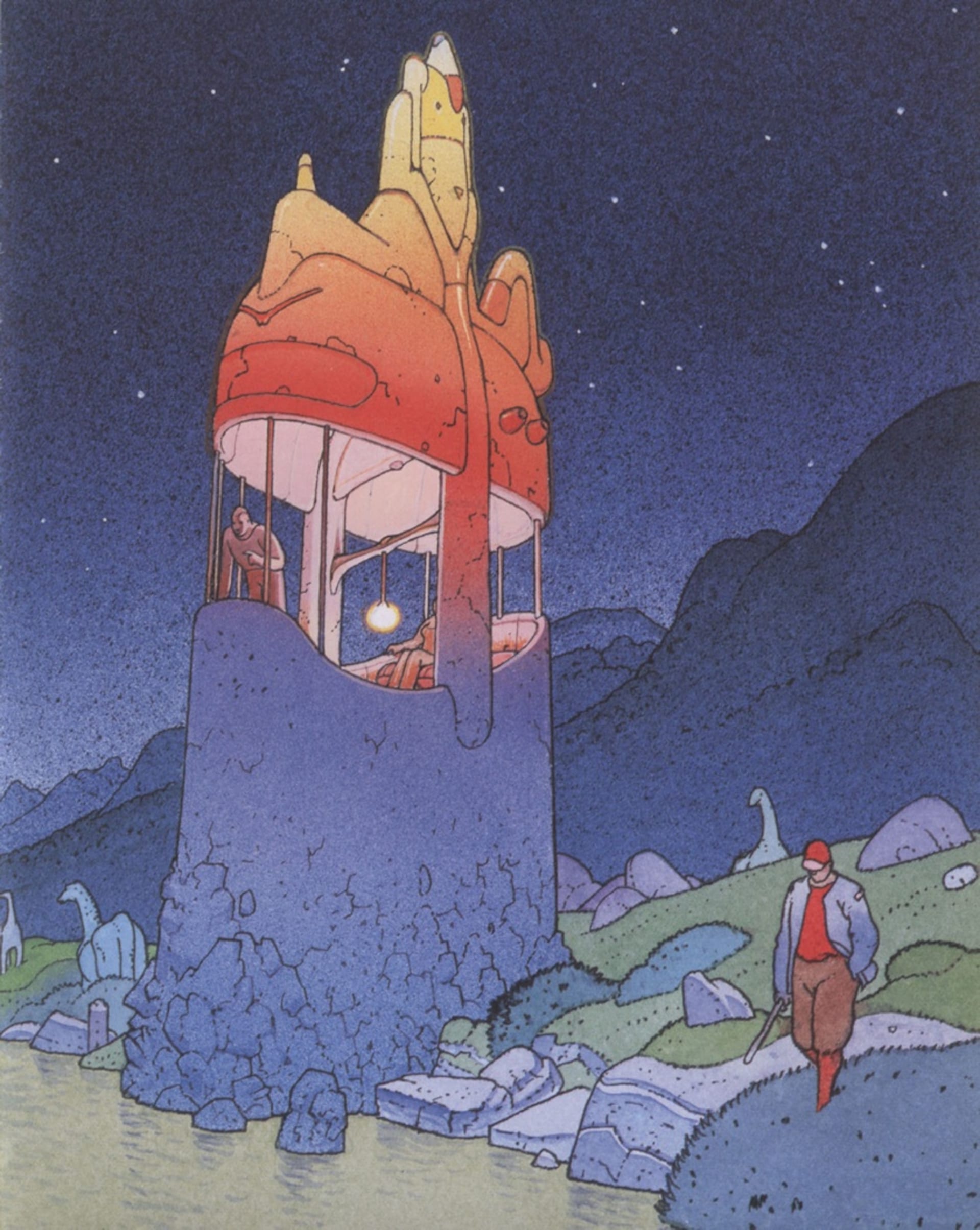If influence is a key measure to understand someone's artistic success, Jean "Moebius" Giraud (1938 - 2012) scores the highest marks of them all. While some artists get friendly nods from their peers in interviews, and others see their work "quoted" in other designs, only a select few are so influential their work is seen as the artistic norm in a specific field.
For science fiction design in movies, comics, video games, and animation, that person is definitely Jean Giraud, better known under his nome de plume Moebius/Mœbius. "You see his influence everywhere," Alien-director Ridley Scott said about Giraud. "It runs through so much you can't get away from it." Take one look at Star Wars, see Luke Skywalker drive his landspeeder across the empty deserts of Tatooine, and you will instinctively understand what he means: you're traveling inside a Moebius comic panel.
For science fiction design in movies, comics, video games, and animation, that person is definitely Jean Giraud, better known under his nome de plume Moebius/Mœbius. "You see his influence everywhere," Alien-director Ridley Scott said about Giraud. "It runs through so much you can't get away from it." Take one look at Star Wars, see Luke Skywalker drive his landspeeder across the empty deserts of Tatooine, and you will instinctively understand what he means: you're traveling inside a Moebius comic panel.


